5 Innovative Go-to-Market Strategies From Indie Game Devs
The old way of marketing games no longer works. What can game devs learn from smaller teams who are leading the way with new, experimental approaches?
Video game marketing has come to a crossroads.
Ever more games are releasing each year, while the cost-effectiveness of traditional channels continues to worsen. Even AAA games with enormous marketing budgets sometimes struggle to drive surefire sales. But there’s an upside to the deluge of releases: Countless independent game developers are experimenting not just with game mechanics and genres, but with new, innovative GTM strategies.
This week, we spoke with five indie devs with innovative strategies for bringing their games to market. You’ve heard of some, like the creators of Deep Rock Galactic and Fruit Ninja. Others—though not yet household names—have found fascinating ways to reach their audience and release games profitably.
That story below. But first, this week’s news from the future.
News From the Future
⚖️ Judge Orders Google to Change Rules for 3rd-Party Stores (The Verge)
Tim Sweeney snagged another W in his ongoing war against mobile platform holders, this time with a ruling that covers a vast array of changes Google must make to the way it regulates third-party storefronts in the Android ecosystem. The end-result is we’re likely on the verge of real competition for Google Play.
😇 Halo Studios: New Name, New Engine, New Games, New Philosophy (Xbox)
Xbox is promising “a new dawn” for Halo, complete with a rebranding of longtime franchise stewards 343 Industries to Halo Studios. The team is embracing Unreal Engine 5 for the next Halo game, and the accompanying announcement video showed off some of the impressive changes the tech will bring to its environments and characters.
💰 Ubisoft Acknowledges Buyout Reports: ‘We regularly review options’ (VGC)
A press report from Bloomberg last week claimed that Ubisoft’s founding Guillemot family is considering taking the company private with Tencent (the latter of which already owns 10% of Ubisoft). The news comes as Ubisoft shares are down by over half year-over-year. The company has so far issued a noncommittal statement that acknowledged the report.
🎮 Former Humble Games Staff Found New Indie Publisher (Eurogamer)
The newly-formed publisher, Good Games Group, is staffed with many of the 36 Humble Games staff laid off by Ziff Davis earlier this year—a layoff that effectively ended the existence of Humble Games. The new company’s CEO announced a partnership with Ziff Davis that would allow them to pick up publishing relationships with games that had been left in the lurch by the dissolution of Humble Games.
5 Innovative Go-to-Market Strategies From Indie Game Devs
While many AAA studios try to extract value from existing IPs and proven genres, indie game devs act as pioneers for the games industry, mixing mechanics and genres and sometimes even inventing new ones.
Many of the resulting indie games end up competing directly with major studio titles on digital storefronts like Steam, PSN, and the Nintendo eShop, so devs have a problem to solve: How to stand out and reach players?
Below, find five examples of indie developers bringing fresh thinking to their go-to-marketing approach.
Søren Lundgaard (Deep Rock Galactic) - The Masters of Early Access
One of the biggest PC gaming sleeper hits in recent years has been the “dwarves in space” mining game Deep Rock Galactic from Danish developers Ghost Ship Games.
Søren Lundgaard, CEO & Co-Founder at Ghost Ship, says that DRG has sold over 9 million copies,1 allowing the roughly 45-person studio to expand into publishing other titles as well.
With not just DRG but also spin-off titles like DRG: Survivor, each Ghost Ship title has first gone through intense Steam Early Access periods, during which Lundgaard says his team is focused specifically on proving that they can make a game that remains interesting and fun for at least 50-100 hours.
“We believe that the more time players spend in a game the more it feels ‘alive’ and the more it can potentially sell,” Lundgaard says. “If a game is done in 10 hours, then the window for the game to stay relevant is simply too small.”
One critical key to making games that stay interesting for 100+ hours, Lundgaard says, is what the Ghost Ship team calls “flexible design,” or systems-driven game design. “We only engage with games where the gameplay is based on how various systems interact,” he says, and games that have “potential for a meta-game with a strong feeling of progression in between the game sessions.” Lundgaard lists roguelike games as examples of a genre that often falls into the category. “The direct opposite of this would for us be a narrative linear puzzle game,” he says.
With sometimes hundreds of thousands or even millions of players checking out their games while they’re still in Early Access, Ghost Ship’s comms strategy, Lundgaard says, is “to serve and be in direct contact with the absolute most die-hard fans. Some of these fans are focused on the gameplay, some on translations, some on memes, some on the community and so on.”
The studio even invests in regular livestreams that reach only a few hundred players, because they believe the approach leads to information reaching the broader audience via a ripple effect. “The messages we deliver there will be forwarded on by this group of DRG evangelists to their circles,” Lundgaard says.
However, this strategy doesn’t come without risks. Lundgaard says his team doesn’t believe in public debate over game features, or in letting the community vote on changes. Ghost Ship’s steady-handed philosophy has garnered respect from players, who proudly defend the studio’s pricing on its optional cosmetic DLCs.
Lundgaard’s advice to other devs: “Listen and adapt and keep the creative control.”
Tobias Springer (Shapez 2) - Start With Web to Build Community
The biggest PC game launch this August was easily Black Myth: Wukong, but another breakout hit—released just four days before BMW—was the $25 indie factory-automation simulator Shapez 2, which sold over a quarter of a million copies after less than a month on the market.2
That’s not a bad haul for the tiny team of eight German and Brazilian developers at tobspr Games, the creators of Shapez 2.
The secret to the game’s success, says tobspr Games founder and CEO Tobias Springer, was building up a community, then giving fans of the first game exactly what they wanted. Even before releasing on early access, Shapez 2 was built in collaboration with fans of the first Shapez game. The team ran dozens of playtests of the game, ran over 100 surveys, and even allowed the community to vote on critical decisions like the sequel’s visual style.3
“We didn't initially want to make another space factory game,” Springer tells A16Z GAMES. “However, surveys clearly showed that this was preferred by our players, and since it is a very subjective topic, we decided to go with it.”
But how did the Shapez team build that community in the first place?
In a phrase: Start with the web.
In a 2021 interview with GameDiscoverCo, Springer shared the strategy:
“From my previous games like Yorg.io, I had a lot of experience with releasing games on the web. My marketing concept works like this:
Release a game as an .io game
Get feedback, iterate, make it better
Release it on Steam
The great thing with this is that you get a lot of free traffic when you have your game running on the web. There are numerous game portals (iogames.space, Armorgames, Kongregate in earlier times, Miniclip, Crazygames) who will list the game, and if you have a track record with them, it’s even easier.
The other great thing is that you can get feedback, so at the launch day you already have 100,000 players or more who playtested it - for free. Additionally, you also can start building up a community on the Discord, as well as collecting wishlists.”
That strategy worked wonders for the first Shapez game, which became one of the top web games on itch.io when it initially released there. The tobspr Games team took that momentum to Steam, where the game slowly grew to sleeper hit status, thanks in part to the ongoing popularity of the web version of the game, Shapez.io, which continued to drive thousands of sales per month.
For the sequel, Springer and his team put special emphasis on working with the most dedicated members of their community to help them build a sequel that would meet players’ expectations. They started up a Patreon and invited the most passionate Shapez fans to join a private Discord server where they could build the game together with fans.
“We wanted to avoid a scenario in which we develop a sequel that players don't really want or expect to be different,” Springer says. “To make sure we were managing expectations, I thought it'd be appropriate to simply ask players about their expectations and preferences.”
Together, the browser and Steam versions of Shapez combined to drive a powerful discovery engine for Shapez 2, which accrued over 330,000 wishlists before it launched into Steam Early Access this August.
And the tobspr Games team’s radically community-focused approach to the game’s development seems to have paid huge dividends. Shapez 2 is currently sitting at a 98% positive rating on Steam.
Sidebar: Teddy Sjöström (Secrets of Grindea) - Have You Tried Being Swedish?
Here’s a just-for-fun example: With so many indie games out there, it’s natural that some would launch using go-to-market strategies that almost no one else could—or even should—try to emulate.
Such is the case for Swedish indie studio Pixel Ferrets, which this year launched Secrets of Grindea after spending nearly nine years in Steam Early Access.
“We thought we would finish within a couple of years,” says programmer Teddy Sjöström, “but we were focused on just making the best game we could, and the time piled up in the background.”4
That made this long dev cycle possible? Swedish government policy: “For the first few years we were actually still students, and survived on student loans, which in Sweden is very affordable and low-interest,” Sjöström explains. “But you can't take those state-funded loans forever.”
Once they ran out, launching on Early Access earned the team enough money to cover their expenses, and Sjöström says that the many years as students living on about $800 per month had taught them to make the most out of their funding.
Though no one would suggest copying Secrets of Grindea’s GTM plan, after its release in February did end up becoming one of the most commercially successful pixel-art RPGs to hit Steam in years, with sales in the hundreds of thousands. That puts it in the same league as many similar SQUARE-ENIX published titles on PC.
The marketing tip we’re taking away from this one: If possible, try being Swedish.
Luke Muscat (Fruit Ninja) - Validating Prototypes Using YouTube
Before his most recent turn as an indie game developer, Luke Muscat designed two of the most iconic mobile games ever: Fruit Ninja and Jetpack Joyride.
After eight years as Chief Creative Officer at Halfbrick Studios, he founded a startup that was snapped up by Snap Inc., a turn of events that led to Muscat spending four years as Head of Design for Snap’s games studio.
Muscat’s latest career twist is a turn as a solo game dev who also documents his process as a YouTube creator. On his channel, where he’s racked up over 150,000 subscribers, he logs his progress on games and dispenses game dev wisdom—an approach favored by many indie developers (like Jonas Tyroller—see above).
But what’s unique about Muscat’s approach is the way he uses feedback from YouTube to try and get market signal on his prototype ideas.
“The idea was to build a YouTube channel that would let me gauge interest in my prototypes, while also developing a community who can come with me on a multi-game journey,” Muscat says. “Kind of market testing, and marketing, all rolled into one.”
An early prototype video exploring the game that ultimately became Muscat’s first solo release, deep-sea diving roguelite Feed the Deep.
Before moving into full production on his first solo game, Muscat built three different game prototypes with playable versions posted to itch.io. Each was promoted with a separate YouTube video on Muscat’s channel, with detailed pitches for the games.
The first two of these, Muscat says, got relatively muted reactions. “When I posted the video for my game Luck of the Draw, it absolutely flopped. Conversion from watching the video to playing the game on itch was shockingly low.”
That result, though disappointing, was also “brilliant,” Muscat says, because it saved him from over-committing to a game idea that was unlikely to work. “Honestly, [Luck of the Draw] was my favorite, and without any validation I probably would have spent two years working on it. But the video quickly showed me that the idea didn't connect with my audience, so I just moved on to the next thing which ended up being Feed the Deep.”
The reaction to the prototype for Feed the Deep was different. “It was more like I want to buy this,” he says. Even better, that first video drove about 12,000 wishlists on Steam.
Muscat remained cautious. “Using YouTube to gauge interest is super fraught,” he says, because a video blowing up could be “more a function of the video thumbnail and title than it is about the game.”
But the response to Feed the Deep was strong enough that Muscat felt confident moving forward with it. His reasoning: “Even if this is just a function of the video being better, hopefully this is a sign that the game itself makes for better videos. And given that my main strategy is to promote the game via these videos, that seems like as good a reason as any to move the game into full production!”
Muscat moved fast, releasing the game on Steam just over a year later, where it’s selling steadily.
Next up, Muscat plans on releasing games either similarly scoped or smaller than Feed the Deep. After all, the faster he generates interesting games, the better his YouTube channel content will be.
Jonas Tyroller (Thronefall) - Embrace the Algorithm
Jonas Tyroller has hit his stride as a game developer in recent years, with games like Islanders and Thronefall each selling hundreds of thousands of copies.
Tyroller’s YouTube channel—where for six years he’s documented his game dev journey—is a treasure trove of advice for independent devs, and recently he made waves with a video called “Making Successful Indie Games is Simple (But Not Easy).”
The video (embedded below) is well-worth watching in full, but the gist of Tyroller’s argument is that digital recommendation algorithms used by platforms like Steam generally have well-aligned goals with game developers, in that both devs and platform holders want to make customers happy while making money.
In a world dominated by algorithms, then, making a great game is the best way to get noticed. In his video, Tyroller puts it more colorfully: “Anything you can do is a fart in the wind compared to the visibility the algorithm can give you.”
“I really do believe that just making great games is by far the best thing you can do for the marketing efforts of your game,” Tyroller tells A16Z GAMES, not only because you’re more likely to unlock traditional word of mouth, but also because you’re more likely to get picked up by digital algorithms, which Tyroller refers to as “word of mouth 2.0.”
“Some people misunderstand me here, because they think what I'm saying is you should not do any marketing at all,” says Tyroller. “No! I'm certainly not saying that. You should 100% market your game and put SOME time into it, but how effective all of these efforts will be just depends very much on your game. The game is more of a deciding factor than the precise way you decide to market it.”
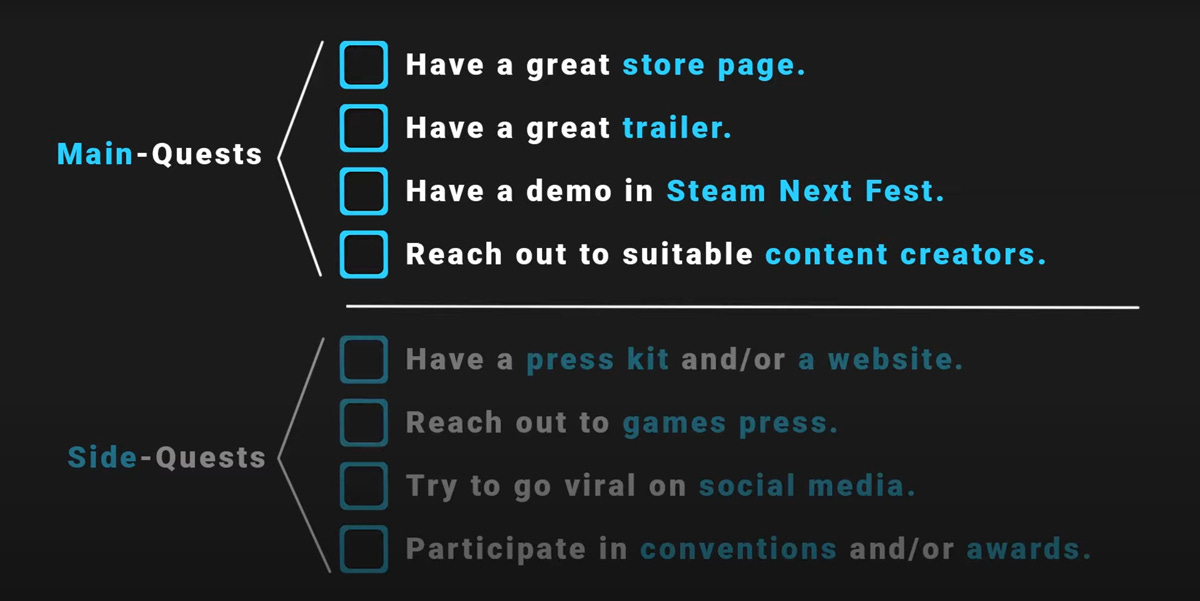
One way to think about this is in terms of the number of hours demanded by any given task facing a developer. If you can spend 1,000 hours investing in a marketing channel, or that same time period improving and polishing your game, Tyroller says, “I would argue that in 85% of cases the latter is the correct answer.”
“A good question to ask yourself is how you can create the most value for others,” Tyroller says. “Usually, in a well aligned economy, what creates the most value for others, creates the most wealth for you. I know that in reality this is not always the case, but it is a good enough proxy to decide what you should be spending your time on.”
That’s it for this week. Want more pieces like this one, or have questions about game development that you’d like to see A16Z GAMES tackle?
Write in to us at games-content@a16z.com
🏃 SPEEDRUN 003 Wraps Up With Demo Day
The latest round of our Tech x Games accelerator wrapped up this week with an incredible Demo Day event showcasing creations from our SPEEDRUN 003 class.
Check out this Twitter thread for more scenes from the event.
🌴 See All the Events Around Tech Week 2024
We’ve put together a handy spreadsheet that tracks all of the games, media, creative technology, and entertainment events for SF (Oct 7-13) + LA (Oct 14-20) Tech Week.
Check it out and let us know if we missed anything!
💼 Jobs Jobs Jobs
There are currently over 100 open jobs listings across both the A16Z GAMES portfolio and our SPEEDRUN portfolio. For the freshest games industry jobs postings, be sure to follow our own Caitlin Cooke and Jordan Mazer on LinkedIn.
Join our talent network for more opportunities. If we see a fit for you, we'll intro you to relevant founders in the portfolio.
You are receiving this newsletter since you opted in earlier; if you would like to opt out of future newsletters, you can unsubscribe immediately.
This newsletter is provided for informational purposes only, and should not be relied upon as legal, business, investment, or tax advice. You should consult your own advisers as to those matters. This newsletter may link to other websites and certain information contained herein has been obtained from third-party sources. While taken from sources believed to be reliable, a16z has not independently verified such information and makes no representations about the enduring accuracy of the information or its appropriateness for a given situation.
References to any companies, securities, or digital assets are for illustrative purposes only and do not constitute an investment recommendation or offer to provide investment advisory services. Any references to companies are for illustrative purposes only; please see a16z.com/investments. Furthermore, this content is not directed at nor intended for use by any investors or prospective investors, and may not under any circumstances be relied upon when making a decision to invest in any fund managed by a16z. (An offering to invest in an a16z fund will be made only by the private placement memorandum, subscription agreement, and other relevant documentation of any such fund which should be read in their entirety.) Past performance is not indicative of future results.
Charts and graphs provided within are for informational purposes solely and should not be relied upon when making any investment decision. Content in this newsletter speaks only as of the date indicated. Any projections, estimates, forecasts, targets, prospects and/or opinions expressed in these materials are subject to change without notice and may differ or be contrary to opinions expressed by others. Please see a16z.com/disclosures for additional important details.
Source: GameDiscoverCo
An approach very different from that of the Ghost Ship Games team!
The Secrets of Grindea team says that a major reason for the game’s incredibly long development cycle was their feeling that each new section of the game needed to feel more epic than all that came before it. “The complexity and play-time of each section kind of kept growing,” says Sjöström. “That said, the Early Access community was incredible, and their support really helped keep us motivated.”





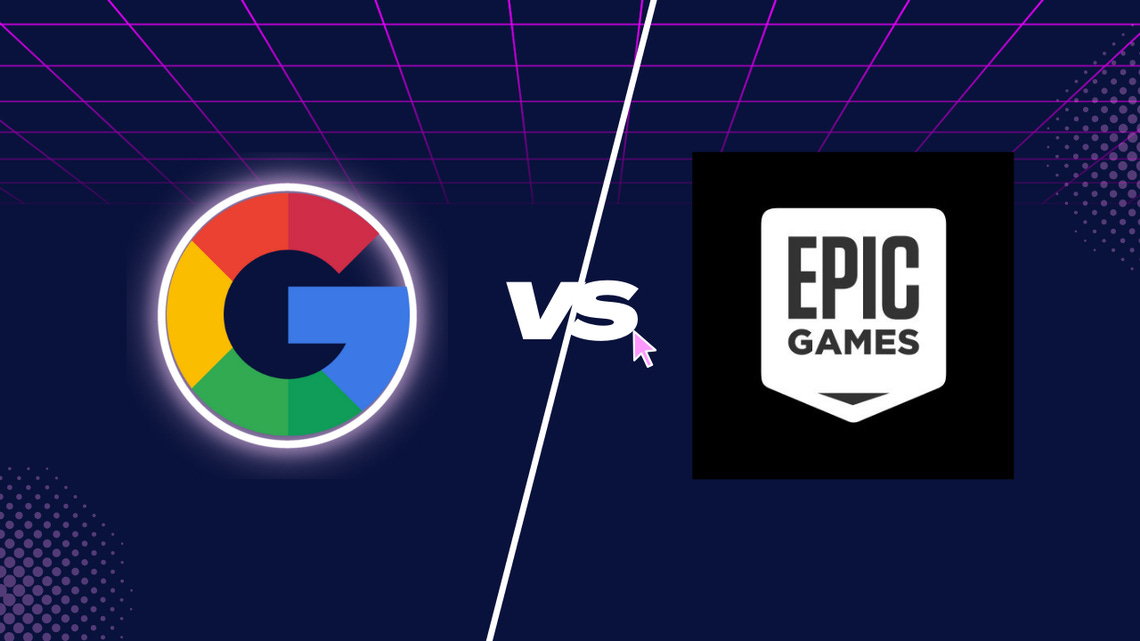
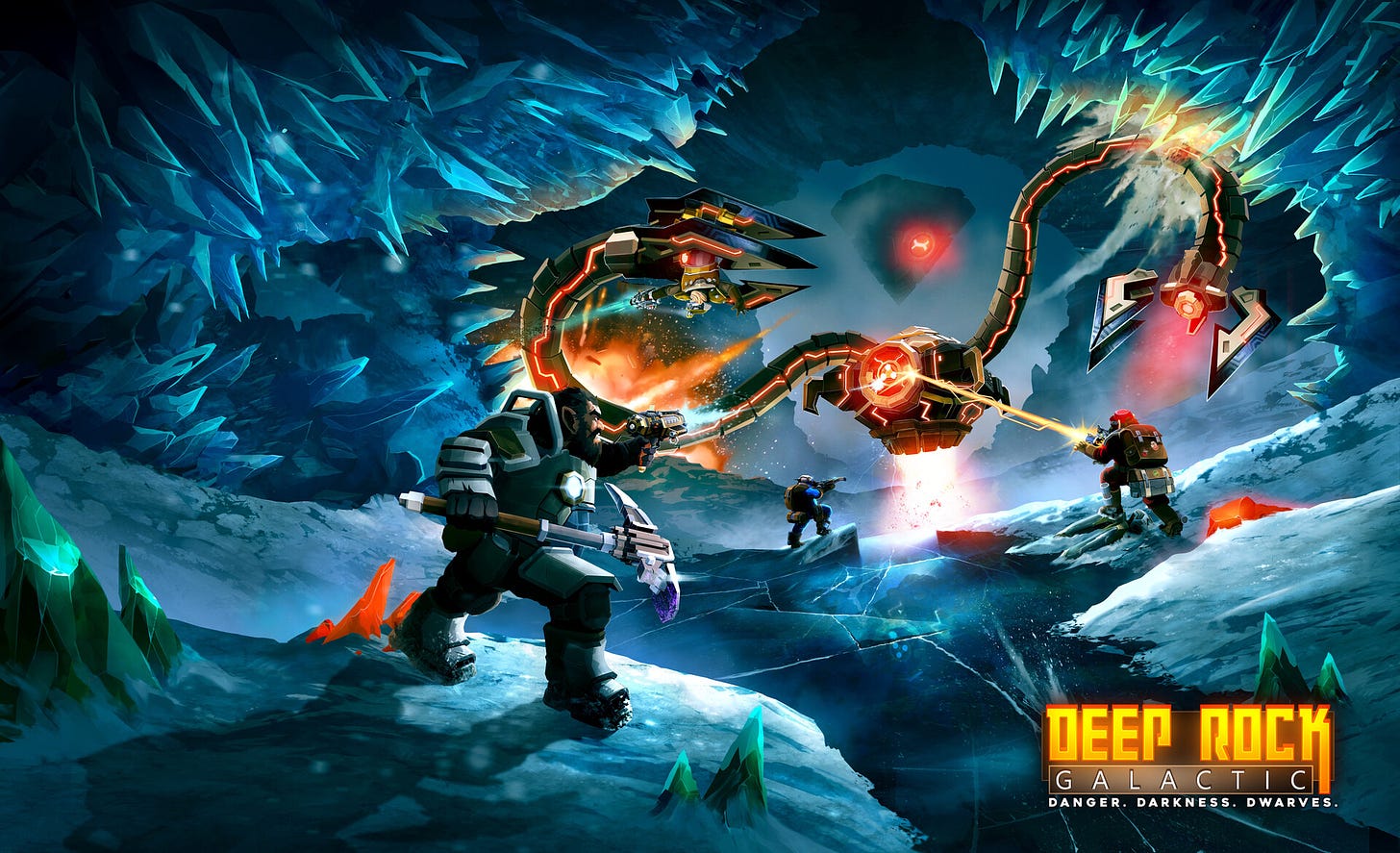
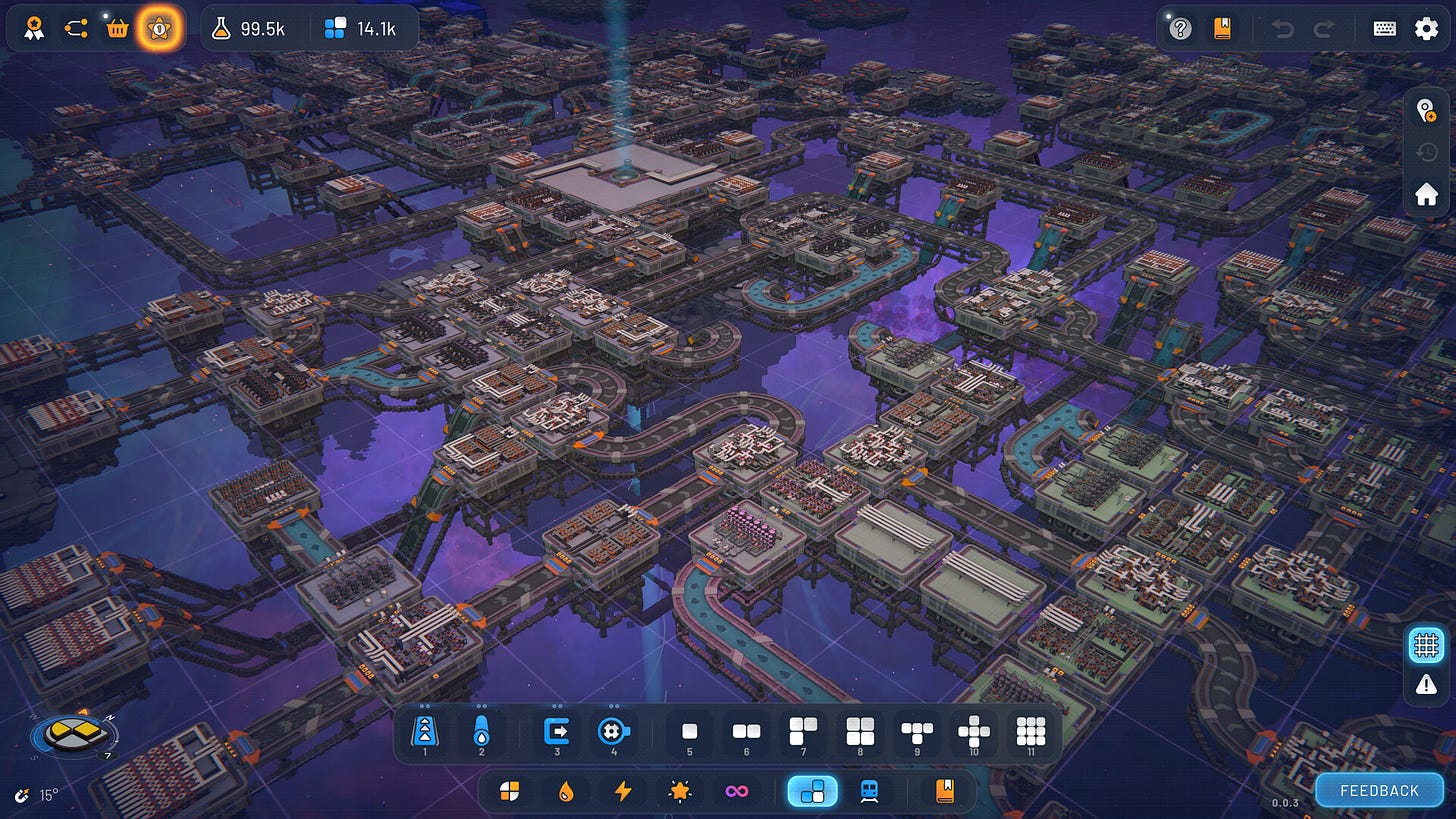
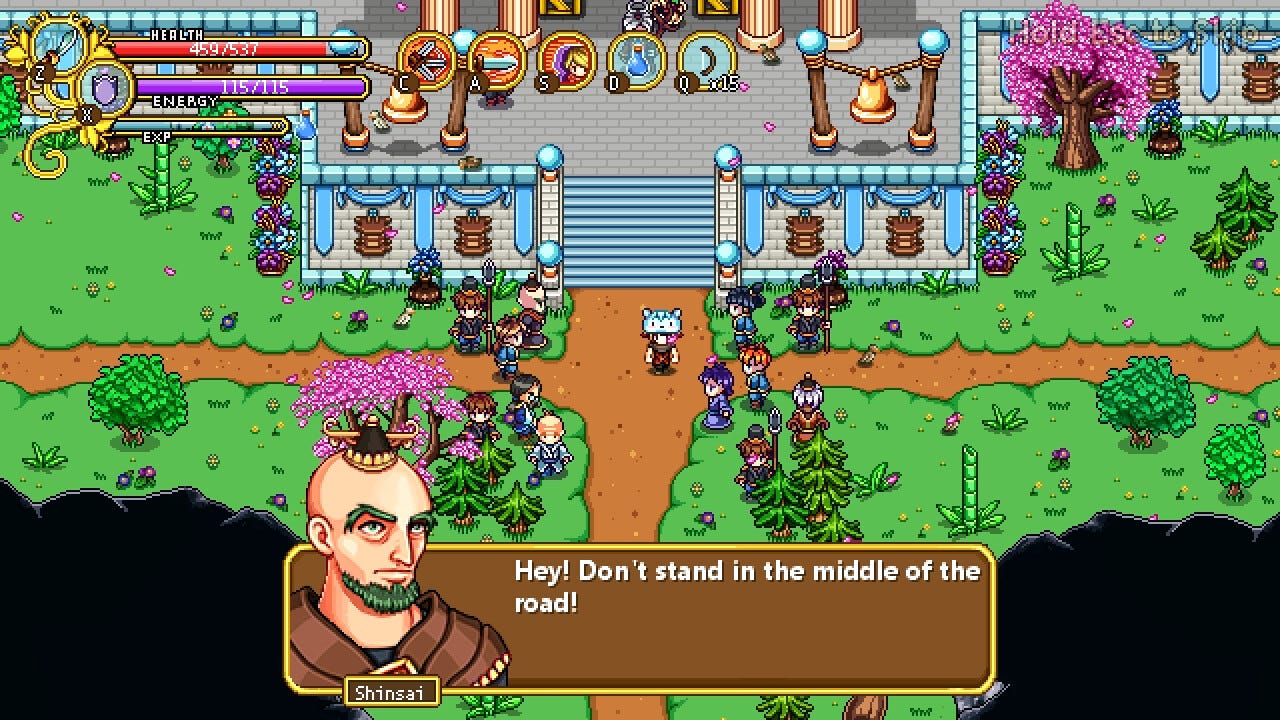
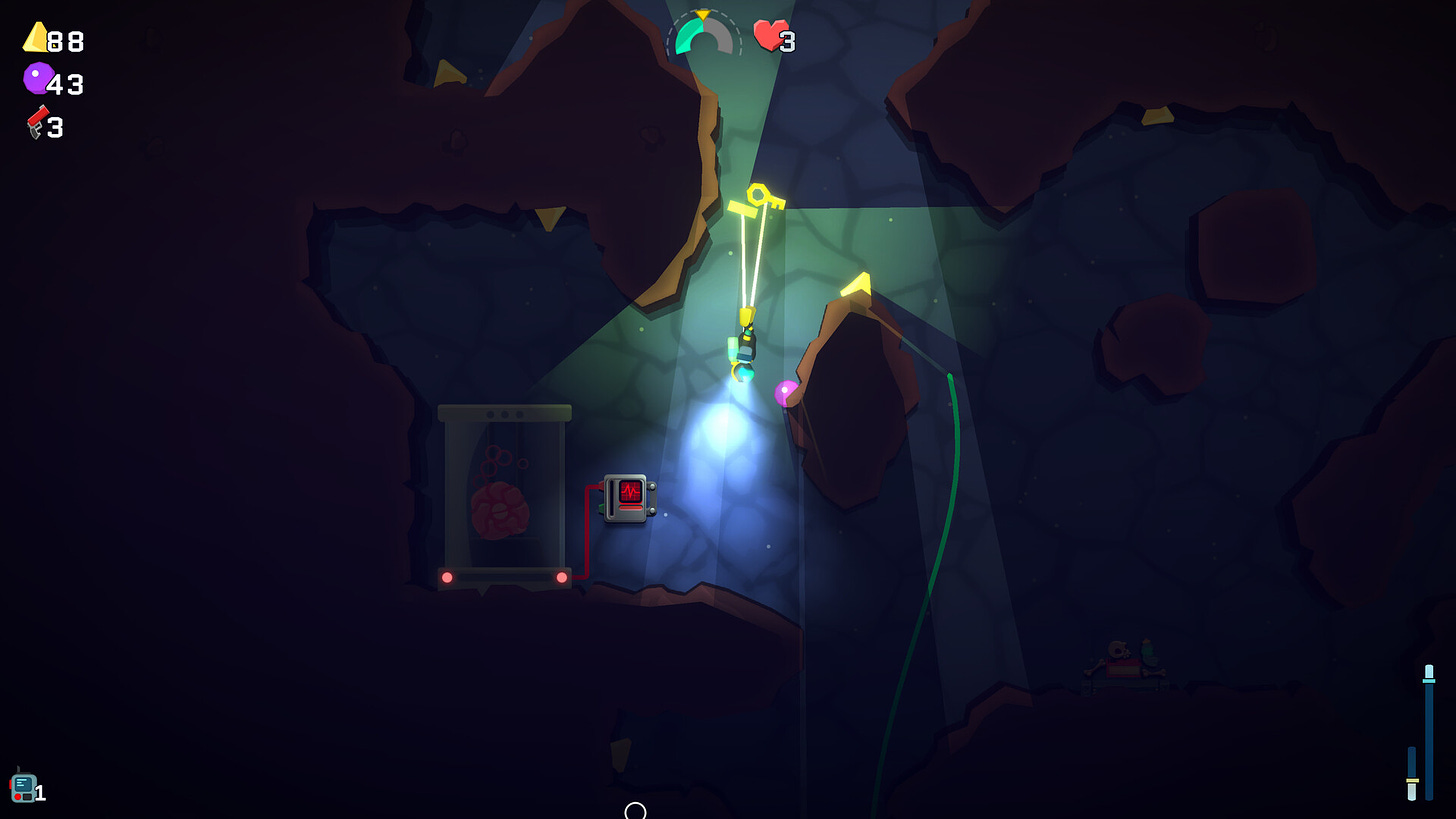
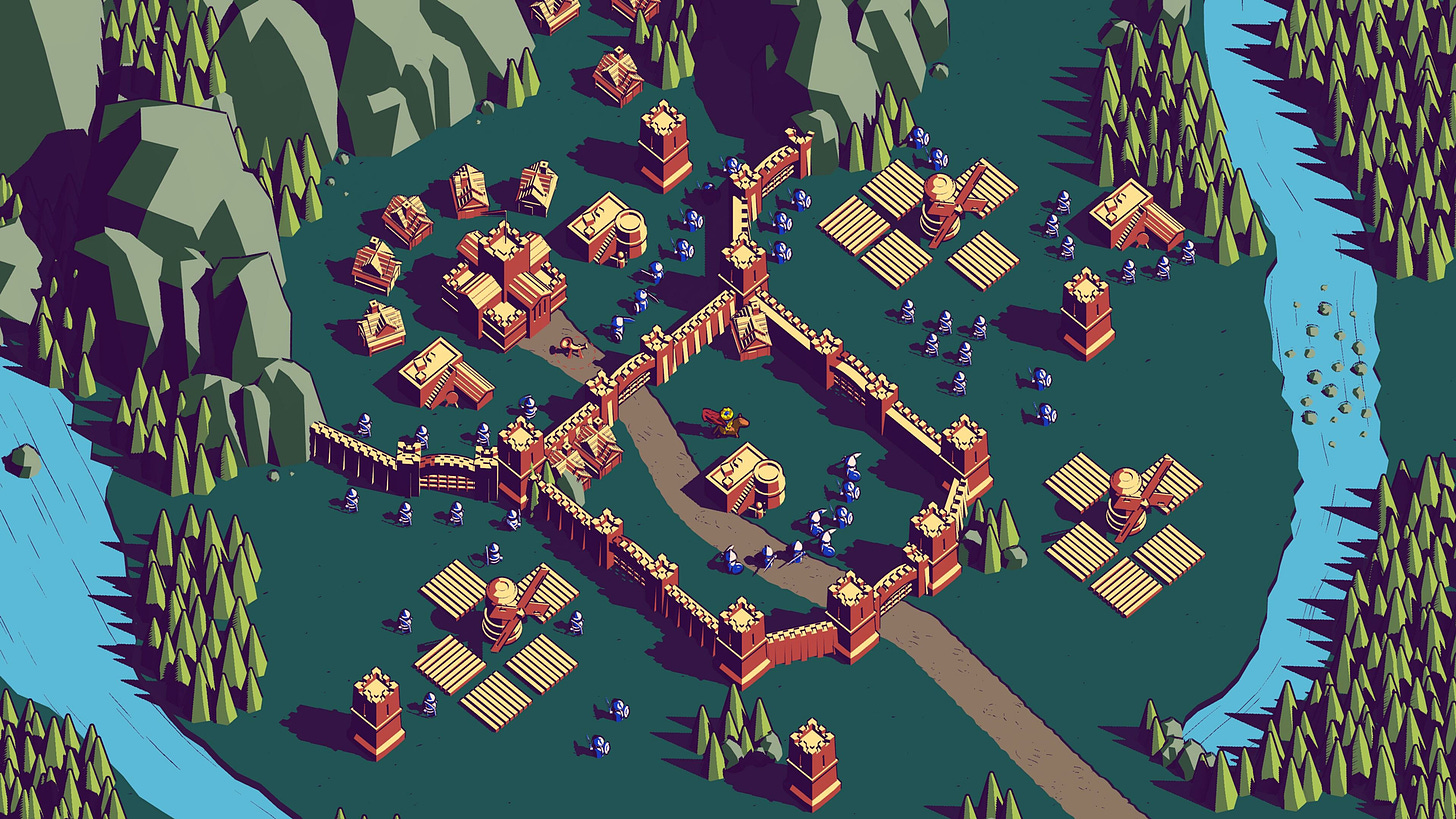

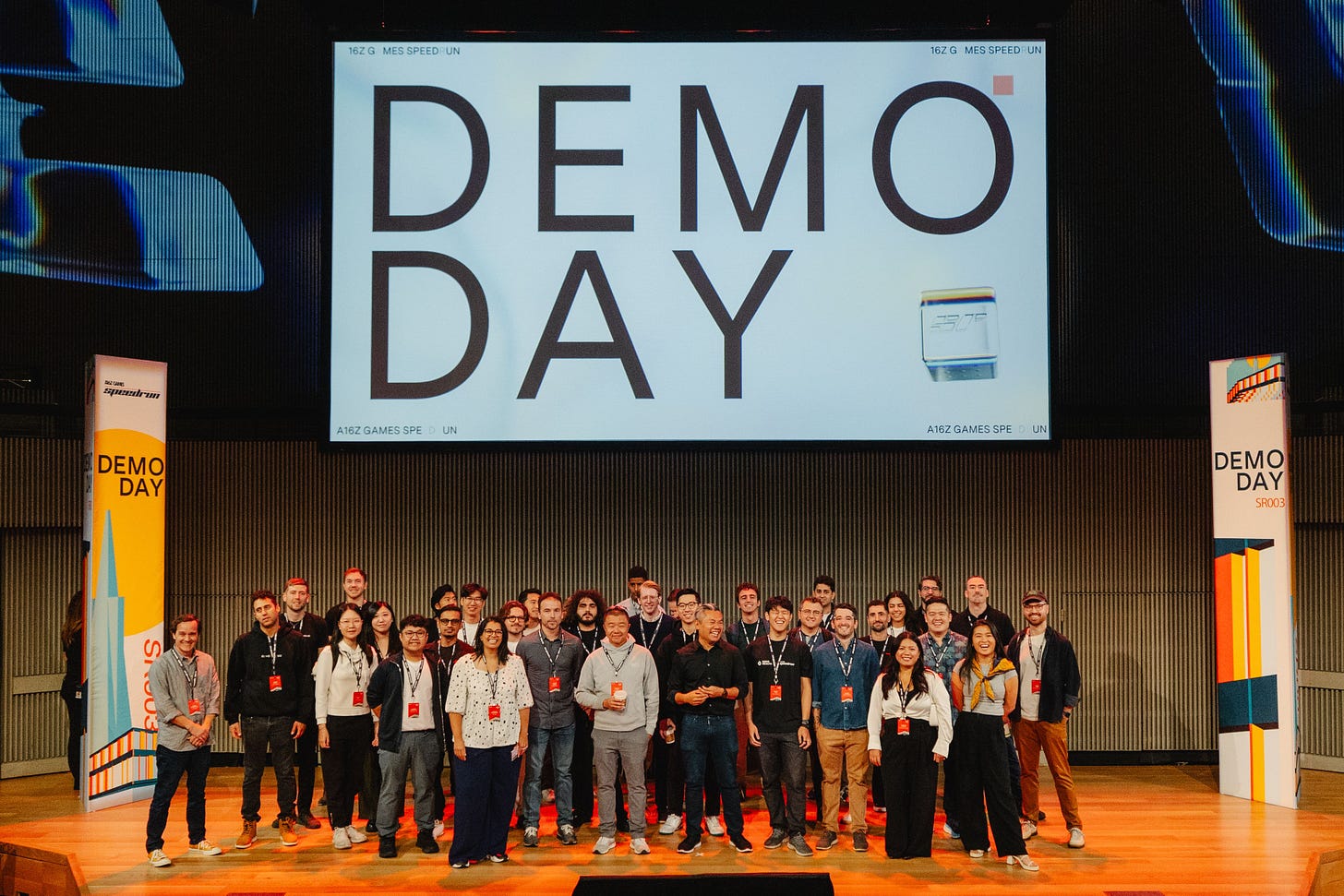


love the web -> iterate -> other platforms pipeline
While the market is certainly crowded, I think a lot of players are craving something new. There is a generalized resentment for AAA that would benefit from riskier decisions.